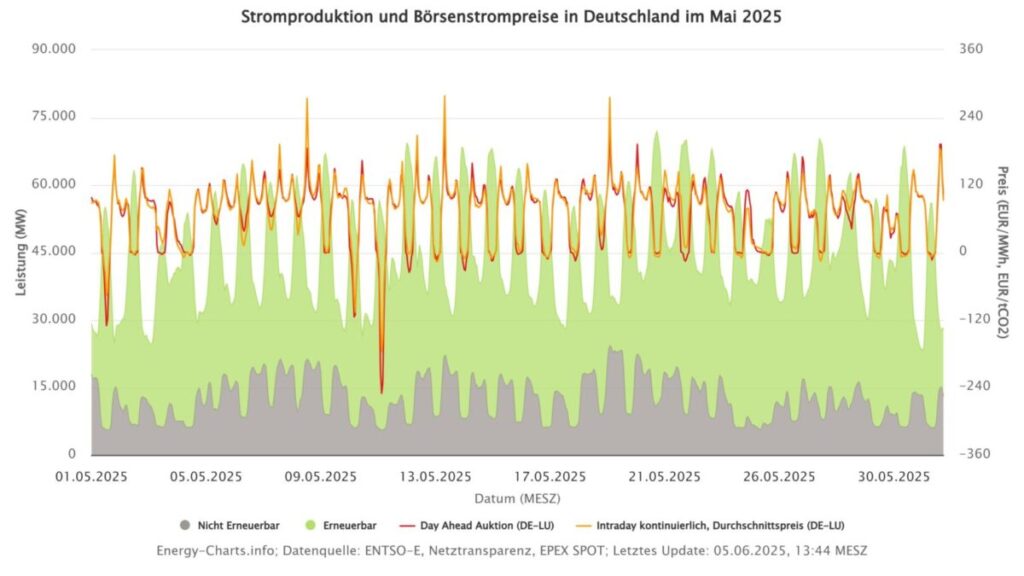Image: Fraunhofer Ise/Energy hit lists
The German day-light electricity spot price became negative in May 130 hours, a total of 744 hours before the month, according to data from Fraunhofer Isee.
Negative prices occurred for 21 of the 31 days in May, usually when photovoltaic systems worked at full capacity in the middle of the morning and in the middle of the afternoon. These periods lasted from three to nine consecutive hours. The longest piece was on 11 May, when the prices remained negative for nine hours and fell as low as -€ 250 /MWh at 1 p.m. (CEST). Fraunhofer ISE noted that store customers with variable rates during these hours received credits for consumption, even after taxes and reimbursements.
Fraunhofer Ise also reported that the prices in May exactly € 0/m
The volatility was underlined at the peak price of the month of € 229.11/m Fraunhofer Isee noted that these daily price peaks usually took place around 8 p.m.
Large battery storage systems operators have used these price fluctuations to support the turnover through arbitration – charging during low or negative price periods and discharge with a high demand. But the storage capacity is limited compared to generation peaks.
The installed PV output of Germany of approximately 105 GW is supported by only 2 GW/2.7 GWH of large-scale battery storage, according to figures of May 2025 of the battery schemes of RWTH Aachen University. Including residential and commercial systems, the total installed capacity reaches 13 GW/20.3 GWH.
Germany placed 457 hours of negative prices in 2024, an increase of approximately 50% compared to the previous year. Towards the end of May 2025, the figure had already reached 250 hours, with solar energy summer months that are still ahead.
This content is protected by copyright and may not be reused. If you want to work with us and reuse part of our content, please contact: editors@pv-magazine.com.
Popular content


